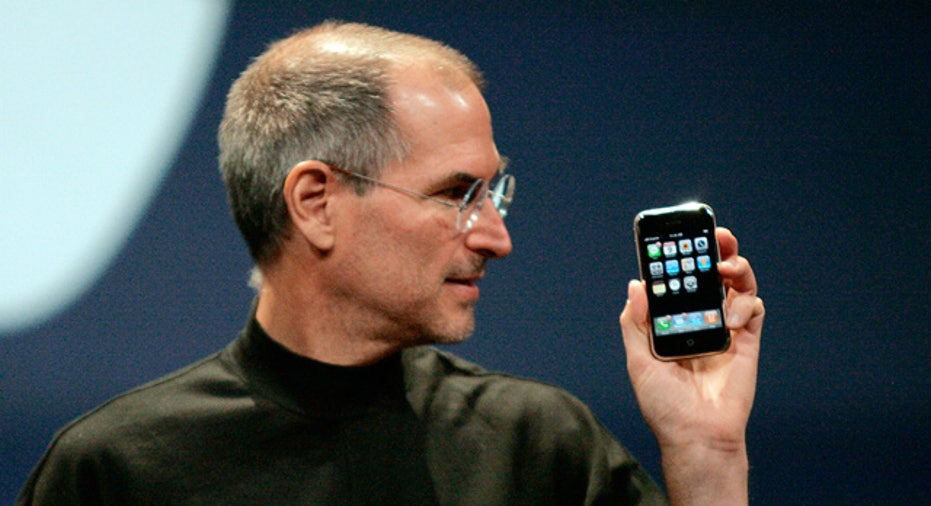Frustrated at Work? You Might Be the Next Steve Jobs

If you’ve ever been disillusioned or dissatisfied at work but unsure of what to do about it, quitting and doing your own thing might be your best chance of becoming rich and famous. Getting yourself fired seems to work just as well.
Behind many of America’s most innovative companies is a frustrated employee or student turned entrepreneur. If necessity is the mother of invention, then frustration is definitely its father. Believe it or not, that’s actually how Silicon Valley got started.
William Shockley was a brilliant researcher who got the Nobel Prize for co-inventing the transistor. Unfortunately the guy couldn’t manage for beans. When a group of eight researchers got fed up with work conditions at his company, Shockley Semiconductor Laboratory, they left and formed Fairchild Semiconductor in 1957.
Fairchild became the undisputed leader in the nascent semiconductor industry and the tree from which much of Silicon Valley would blossom. Its founders, known as the “traitorous eight” for their supposed betrayal of Shockley, included Gordon Moore and Robert Noyce, who would go on to co-found Intel (NASDAQ:INTC), and Eugene Kleiner of venture capital giant Kleiner Perkins Caufield & Byers.
Elsewhere in the Bay Area, a young Steve Jobs struggled with a formal education system that frustrated and bored the heck out of him. He somehow managed to get through high school, but dropped out of college after just six months.
Jobs then worked at video game maker Atari, travelled through India, and sold illegal “blue boxes” that replicated phone tones for free long-distance calls. The boxes were designed by his friend and computer whiz Steve Wozniak. The two were joined by Ronald Wayne and produced the Apple I out of a garage in 1976.
The following year, Carnegie Mellon graduate Andy Bechtolsheim moved to Silicon Valley to work for Intel as a computer engineer. When Intel decided to move him to a facility in Oregon, he quit and joined Stanford’s PhD program where he designed the first Sun (Stanford University Network) computer workstation with built-in networking.
Bechtolsheim later joined Stanford business grads Vinod Khosla and Scott McNealy to launch Sun Microsystems. While the German-born Bechtolsheim would go on to found and fund several successful companies, he’s perhaps best known for writing the first $100,000 check to Larry Page and Sergey Brin that led to the official creation of Google (NASDAQ:GOOGL).
That $100,000 investment came to be worth more than $2 billion.
Don’t get the wrong idea. The phenomenon of frustration or termination leading to exciting new beginnings is not limited to the technology industry, not by any stretch.
In 1978, Handy Dan was regarded as the benchmark home improvement company. Handy Dan’s CEO, Bernie Marcus, ran the company so well that he was considered a prime candidate to replace Sanford Sigoloff, the CEO of parent company Daylin Corp. But Sigoloff would have none of that. He fired Marcus and his CFO buddy, Arthur Blank.
Instead of wallowing in their misery, the two hatched a plan to create the Sears Roebuck (NASDAQ:SHLD) of the home improvement industry. They thought the combination of quality merchandise and excellent service at the right price “could change retailing in the United States,” according to Marcus. They called their stores Home Depot (NYSE:HD).
While Marcus and Blank were launching their first Home Depot stores in Atlanta, Starbucks (NASDAQ:SBUX) sold roasted coffee beans in Seattle. But a trip to Milan gave the company’s marketing executive, a young New Yorker by the name of Howard Schultz, the idea for cafes that offered espresso and a place to meet, as was the custom all over Italy.
Frustrated that Starbucks’s owners wouldn’t go for his idea, Schultz left the company to start his own venture in 1985. And while his former bosses had no interest in what they called “the restaurant business,” they funded Schultz’s retail chain, sold him the Starbucks brand and changed their name to Peet’s, a green bean supplier they had recently acquired.
While these are just a handful of famous anecdotes, I could go on and on with similar stories from my own experience with dozens of startups in Silicon Valley and beyond. Not surprisingly, all of the best career and business decisions I ever made were in frustration or desperation.
Which reminds me, it was soon after I met the contagiously energetic Bechtolsheim that I quit the life of a corporate executive and started my own consulting firm, c. 2003. I guess there’s something about that guy that makes you want to stop beating your head against a wall and go for it.
Dissatisfied? Disillusioned? Then at least consider going for it. You never know where it might lead. And you may never feel this frustrated again.



















